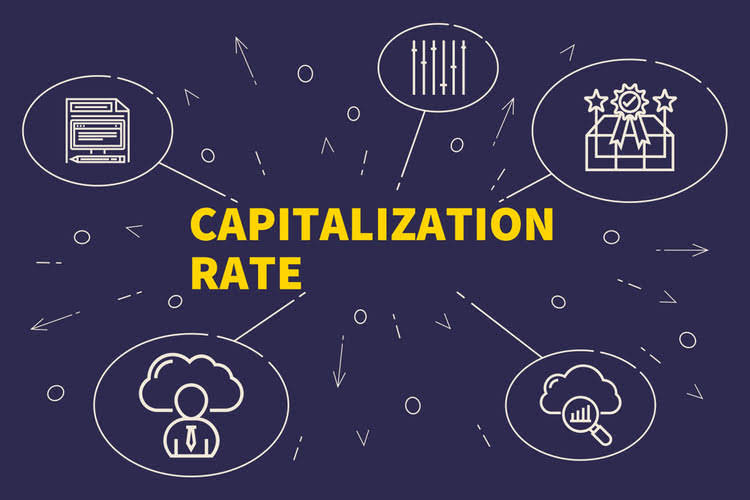
Overhead costs are expenses that are not directly tied to production such as the cost of the corporate office. To allocate overhead costs, an overhead rate is applied to the direct costs tied to production by spreading or allocating the overhead costs based on specific measures. Predetermined overheads rate is the ratio of estimated overhead cost to the estimated units to be allocated and is used for allocation of https://www.bookstime.com/ expenses across its cost centers and can be fixed, variable or semi-variable. Before the beginning of any accounting year, it is determined to estimate the level of activity and the amount of overhead required to allocate the same. At a later stage, when the actual expenses are known, the difference between that allocated overhead and the actual expense is adjusted. In larger companies, each department in which different production processes take place usually computes its own predetermined overhead rate.

Get in Touch With a Financial Advisor
In order to find the overhead rate we will use the same basis that we have chosen by multiplying this basis by the calculated rate. For example, if we choose the labor hours to be the basis then we will multiply the rate by the direct labor hours in each task during the manufacturing process. Hence, the overhead incurred in the actual production process will differ from this estimate. Of course, management also has to price the product to cover the direct costs involved in the production, including direct labor, electricity, and raw materials.

Selecting an Estimated Activity Base
- Businesses need to calculate a predetermined overhead rate to estimate the total manufacturing costs that are borne on the production of a single unit of a product.
- A financial professional will offer guidance based on the information provided and offer a no-obligation call to better understand your situation.
- This project is going to be lucrative for both companies but after going over the terms and conditions of the bidding, it is stated that the bid would be based on the overhead rate.
- So if your business is selling more products, you’ll still be paying the same amount in rent.
Departmental overhead rates are needed because different processes are involved in production that take place in different departments. (a) We commonly predetermined overhead rate use direct labor hour as the basis when there is a labor intensive environment in a manufacturing company or factory. This option is best if you’re just starting out and don’t have any historical data to work with. Again, that means this business will incur $8 of overhead costs for every hour of activity.

Examples of Overhead Rates
- However, if the overhead rate is computed annually based on the actual costs and activity for the year, the manufacturing overhead assigned to any particular job would not be known until the end of the year.
- Unless a cost can be directly attributable to a specific revenue-generating product or service, it will be classified as overhead, or as an indirect expense.
- Their amount of allocated overhead is not publicly known because while publications share how much money a movie has produced in ticket sales, it is rare that the actual expenses are released to the public.
- However, its main drawback is that it is historical in nature; it can only be ascertained after the overhead costs have been incurred and measured.
- The sales price, cost of each product, and resulting gross profit are shown in Figure 6.6.
- In some industries, the company has no control over the costs it must pay, like tire disposal fees.
- Unexpected expenses can be a result of a big difference between actual and estimated overheads.
In either case, the difference between absorbed overheads and actual overheads is adjusted in profits or losses of the business. The formula for a predetermined overhead rate is expressed as a ratio of the estimated amount of manufacturing overhead to be incurred in a period to the estimated activity base for the period. Sales of each product have been strong, and the total gross profit for each product is shown in Figure 6.7. Using the Solo product as an example, 150,000 units are sold at a price of $20 per unit resulting in sales of $3,000,000. The cost of goods sold consists of direct materials of $3.50 per unit, direct labor of $10 per unit, and manufacturing overhead of $5.00 per unit.

Which activity is most important to you during retirement?
As you can see, calculating your predetermined overhead rate is a crucial first step in pricing your products correctly. There are concerns that the rate may not be accurate, as it is based on estimates rather than actual data. In addition, changes in prices and industry trends can make historical data an unreliable predictor of future overhead costs.
Basis

However, the variance between actual overhead and estimated will be reconciled and adjust to the financial statement. One of the advantages of predetermined overhead rate is that businesses can use it to help with closing their books more quickly. This is because using this rate allows them to avoid compiling actual overhead costs as part of their closing process. Nonetheless, it is still essential for businesses to reconcile the difference between the actual overhead and the estimated overhead at the end of their fiscal year.
- Let’s say we want to calculate the overhead cost of a homemade candle ecommerce business.
- The third step is to compute the predetermined overhead rate by dividing the estimated total manufacturing overhead costs by the estimated total amount of cost driver or activity base.
- Instead of using the numbers of units to be produced, the business may also choose another activity base such as labor hours or machine hours that are needed to meet the estimated level of activity.
- Furthermore, when actual costs are compared to the budgeted costs based on predetermined overhead rates, the variances may be too significant.
- Knowing the total and component costs of the product is necessary for price setting and for measuring the efficiency and effectiveness of the organization.
- These two factors would definitely make up part of the cost of producing each gadget.
- Nonetheless, it is still essential for businesses to reconcile the difference between the actual overhead and the estimated overhead at the end of their fiscal year.
That is, a number of possible allocation bases such as direct labor hours, direct labor dollars, or machine hours can be used for the denominator of the predetermined overhead rate equation. If an actual rate is computed monthly or quarterly, seasonal factors in overhead costs or in the activity base can produce fluctuations in the overhead rate. For example, the costs of heating and cooling a factory in Illinois will be highest in the winter and summer months and lowest in the spring and fall. If the overhead rate is recomputed at the end of each month or each quarter based on actual costs and activity, the overhead rate would go up in the winter and summer and down in the spring and fall. As a result, two identical jobs, one completed in the winter and one completed in the spring, would be assigned different manufacturing overhead costs.
Enable Business to Calculate Profitability without Waiting for Actual Result
Since predetermined overhead rates are used in budgets, they can also act as a monitoring and controlling tool for businesses. When monitoring and controlling overheads, businesses need some standard, to assets = liabilities + equity compare actual overheads with, to understand whether the budget is being properly followed. In the absence of predetermined overhead rates, the business cannot compare actual expenses with any standard and, thus, cannot evaluate its actual performance. Now management can estimate how much overhead will be required for upcoming work or even competitive bids. For instance, assume the company is bidding on a job that will most likely take $5,000 of labor costs. The management can estimate its overhead costs to be $7,500 and include them in the total bid price.


Hinterlasse einen Kommentar
Du musst angemeldet sein, um einen Kommentar schreiben zu können.